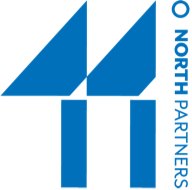A leader’s ability to communicate underpins all six skills.
The first skill, shaping a vision that is exciting and challenging for the team, is where everything starts. Without a clear and compelling purpose, it’s difficult – if not impossible – to develop strategic priorities and align the organization in pursuit of shared goals. And while we love words and deeply believe in their power to engage and inspire, developing a vision is about much more than words.
We’ve been a part of vision development that is focused on wordsmithing by a select few and totally void of the real work of capturing the organization’s “True North.” We’ve also been a part of collaborative vision development that is focused on data, asking the hard questions and inviting the input of a broad base of stakeholders. To grow this skill, leaders should focus on not just their own ability to set a vision, but the process by which they do so. At the root of this skill is the leader’s ability to invite input, articulate the vision and keep it at the forefront — all of which depend on clear communication.
Translating that vision into a clear strategy about what actions to take, and what not to do, is the second fundamental skill. While this skill involves much more than communication, how a strategy is communicated is ultimately the barometer of its success. Does the strategy clearly connect to the vision? Does it convey clear organizational priorities? Is it digestible by the organization, at all levels? Is the language clear? Are leaders at various levels of the organization able to connect their unit’s work to the broader strategy? Do people at every level understand how their role supports the strategy? Arriving at the strategy is one thing; getting the organization to understand, embrace and act on it is another.
The third skill identified by HBR is recruiting, developing, and rewarding a team of great people to carry out the strategy. This is indeed essential, as evidenced by the endless stream of content and tools that help leaders attract and retain great teams. But sometimes leaders need to be reminded of the simple things they can do, starting with being decent human beings and role models – especially in today’s environment. In a recent survey by Georgetown University’s Christine Porath of nearly 20,000 employees worldwide, respondents ranked respect as the most important leadership behavior.
Yet employees report more disrespectful behavior each year. Being seen and heard — simply being recognized as a human being — is often the validation employees are seeking. A 2011 blog written by an Apple sales associate captures it well: “For Tim Cook, there are no dumb questions. When he answered me, he spoke to me as if I were the most important person at Apple. Indeed, he addressed me as if I were Steve Jobs himself. His look, his tone, the long pause . . . that’s the day I began to feel like more than just a replaceable part. I was one of the tens of thousands of integral parts of Apple.”
Focusing on measurable results is the fourth fundamental skill, and like the other five, it involves more than meets the eye. For example, high proficiency in this skill requires an ability to not only identify specific outcomes, but communicate meaning and progress. Leaders must connect results to organizational vision and values, convey milestones, outline what success ultimately looks like, transparently communicate progress, both good and bad, and be truly open to incorporating new facts and perspectives.
Fostering innovation and learning to sustain a team and grow new leaders is the fifth skill. Googling “innovation” brings up 1,300,000,000 results. “Fostering innovation” produces 33,600,000. In our digital economy, business leaders believe two out of five of the top-ranked companies in their industries won’t exist in the next five years, making innovation essential. And companies are increasingly recognizing the value of diverse perspectives and an inclusive atmosphere in driving innovation. At Cisco, research shows that inclusive practices were the second biggest enabler of IoT innovations, right behind the quality of technology infrastructure.
Where do leaders begin? With communication. They need to make it clear that ideas come from anywhere — that every department, regardless of its function, and every individual, regardless of background — has the power to innovate. And through their actions, leaders can demonstrate that well-considered attempts to innovate, even when they fail, are to be learned from, shared and celebrated.
The sixth and final skill, leading yourself, is perhaps the hardest for most of us. Knowing yourself, improving yourself, and managing the appropriate balance in your own life is easier said than done, especially with day-to-day commitments and deadlines related to career, family, and friends – not to mention the complexities of the world we live in. But we all know leaders who have found a way to routinely and honestly assess their own impact, just as we know those who shun any form of self-reflection. In our experience, the leaders who lead themselves — and authentically give their teams a glimpse of that effort — are the leaders who build great teams and produce outstanding results.
